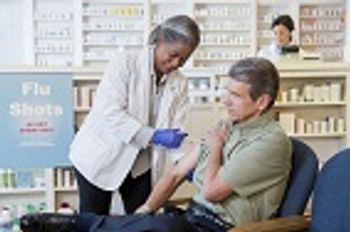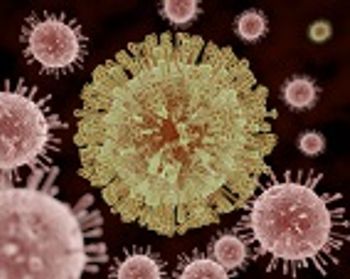
A new study found that Lyme disease cases in the Western United States could rise as a result of weather changes caused by El Niño.

A new study found that Lyme disease cases in the Western United States could rise as a result of weather changes caused by El Niño.

Rotary International teamed up with the Centers for Disease Control and Prevention to hold a briefing on the eradication of polo despite past setbacks.

The Centers for Disease Control and Prevention teamed up with Rotary International to host a live media briefing to highlight progress in the global fight against polio.

Speakers at the annual meeting of the Infectious Diseases Society of America discussed infectious disease epidemics across the globe.

A study using different criteria for urine testing than those outlined by the current Infectious Disease Society of America (IDSA) guidelines, has proven to cut down on the testing of urine samples and inappropriate use of antimicrobials.

Seven cases of Candida auris have been identified within the United States, according to a report in the latest Centers for Disease Control and Prevention’s Morbidity and Mortality Weekly Report.

At the Centers for Disease Control and Prevention 2016 STD Prevention Conference, lead authors of several studies discussed how researchers are taking novel approaches to sexually-transmitted infection screening.

The first case of Mayaro virus has been reported in Haiti.

Rapid syphilis screening tests can be useful in community-based facilities, according to the results of five studies presented in a mini-plenary on September 22 at the Centers for Disease Control and Prevention 2016 STD Prevention Conference in Atlanta, Georgia.

At the Centers for Disease Control and Prevention's 2016 STD Prevention Conference, researchers discussed three novel prevention strategies for HIV, other STIs, and unintended pregnancies.

With new US Food and Drug Administration rules on antibiotics in agriculture taking effect at the start of 2017, challenges remain when it comes to the reduction of antimicrobial use in livestock.

Methicillin-resistant Staphylococcus aureus (MRSA) causes more than 11,000 deaths in the United States each year and a new study shows how this pathogen is able to evade last-line antibiotics.

Public-health experts recommend that the seasonal influenza vaccine be available in more non-medical settings in hopes that with increased accessibility, more people will choose to get vaccinated.

US food-safety legislation has toughened up as both regional and national centers strive to provide the public with safe food through the use of food-related disease surveillance programs and new technologies.

A new study has found that Zika virus impacts fertility in male mice.

Researchers have not been able to develop a vaccine for hepatitis C, which causes 700,000 deaths around the world annually, and now, a new study shows why developing a vaccine for the virus has been so difficult.

The monoclonal antibody, ibalizumab, has proven to be both safe and effective in treating patients who are infected with multi-drug-resistant HIV-1 and have been previously treated.

The huge economic toll of widespread disease is rarely accounted for when officials set budgets—with the result that countries frequently find their finances in shambles during and after a pandemic.

At the ID Week meeting in New Orleans, Louisiana, a trio of speakers addressed some of the outpatient challenges regarding antimicrobial stewardship.

Compared with bigger institutions, community hospitals are lacking when it comes to educating healthcare workers and providing effective infection control programs, which is compromising patient care, according to a presentation at ID Week 2016.

Researchers estimate that there are more cases of sclerosing panencephalitis (SSPE), a fatal measles complication, than previous thought.

At the annual meeting of Infectious Diseases Society of America, researchers revealed that in addition to microcephaly, other neurological consequences of Zika virus are being recognized.

Researchers say Morgellons disease is associated with Lyme disease, and the colorful filaments protruding from the skin are comprised of keratin and collagen.

“The number of people who experience the devastating effects of preventable infectious diseases like measles, diphtheria, and whooping cough is at an all-time low," according to the Centers for Disease Control and Prevention (CDC).

The probability of a measles epidemic occurring in Texas increases as the number of children exempt from receiving the measles vaccine continues to grow.

A trio of speakers addressed the global problem of antibiotic resistance and how the problem is especially vexing in Africa, Asia, and Latin America, at the annual conference of the Infectious Diseases Society of America in New Orleans, Louisiana.

During ID Week, Robert Read, MD, from University Hospital Southampton in Southampton, UK, discussed how a better understanding of meningococcal disease has led to more effective treatment strategies.

At the annual meeting of the Infectious Diseases Society of America in New Orleans, Louisiana, Judith Currier, MD, from the University of California, Los Angeles, discussed the many challenges that HIV-positive individuals face as they live longer lives.

Zika has reached Australia and authorities are taking preventive measures to prevent a large-scale outbreak.

Review authors discuss current knowledge regarding psychobiotics and identify questions for future research.